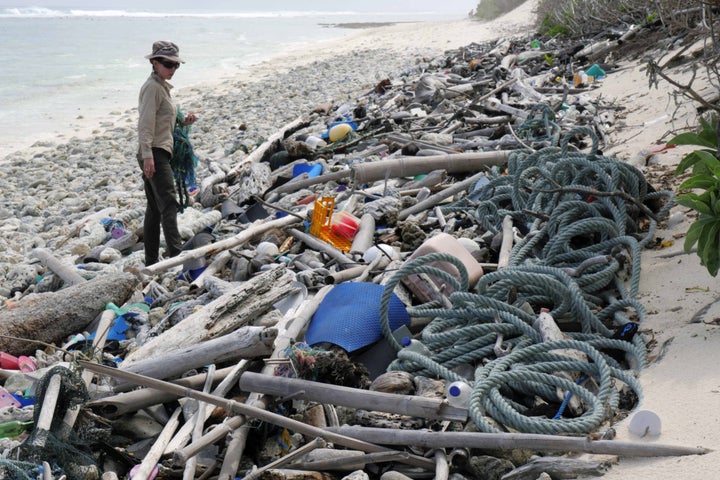Australia’s Cocos Islands advertises itself as the country’s “last unspoilt paradise,” but a grim new study reveals the dirty truth about the remote archipelago ― and how the global marine plastic pollution crisis may be far worse than feared.
The study, published last week in the journal Scientific Reports, estimated 414 million pieces of plastic debris weighing some 524,000 pounds are polluting the islands, an external territory of Australia in the Indian Ocean.
Single-use plastic items like straws and plastic bags made up at least 25% of the debris, according to the researchers, who surveyed more than two dozen beaches across seven of the archipelago’s 27 islands in 2017. A staggering 373,000 toothbrushes and 977,000 shoes like plastic flip-flops also were discovered.

The Cocos Islands are home to about 600 people. It would have taken inhabitants an estimated 4,000 years to produce an equivalent amount of trash, the study said.
“They did not create this problem, and they cannot undo it on their own,” the study’s author Jennifer Lavers told The Washington Post.
Lavers, whose team previously surveyed the uninhabited and massively polluted Pacific island of Henderson, said remote islands with small or no human populations can provide a clear picture of just how much plastic debris is clogging the world’s oceans. Henderson Island, located about 3,000 miles from any major population center, was found to have the highest density of plastic waste anywhere in the world.
“Islands such as these are like canaries in a coal mine and it’s increasingly urgent that we act on the warnings they are giving us,” Lavers said in a statement last week. “Plastic pollution is now ubiquitous in our oceans, and remote islands are an ideal place to get an objective view of the volume of plastic debris now circling the globe.”
Troublingly, Lavers said her research on the Cocos Islands suggests this volume may be a lot higher than we think.
A vast majority ― 93% ― of the plastic debris found on the islands was buried in the top four inches of sand and not on the surface.
“This suggests global debris surveys, the majority of which are focused solely on surface debris, have drastically underestimated the scale of debris accumulation,” the researchers said.
They also noted that microplastics made up about 50% of the waste collected from the surface and about 60% of the debris that was buried.

Researchers estimated that the amount of debris visible on the beach surface on the Cocos Islands was outnumbered 26-1 by the debris buried underneath.
This suggests that the already-staggering amount of plastic waste found during beach cleanups ― like the 1.7 million food wrappers and 750,000 plastic bags picked up during Ocean Conservancy’s international coastal cleanup event in 2018 ― is “likely just the tip of the iceberg,” Lavers told the Post. “None of those cleanups are digging below the surface.”
Even her team, she said, likely didn’t uncover the full extent of the plastic pollution on the Cocos Islands during their survey.
The researchers weren’t able to access two known “debris hot spots” in the archipelago and they didn’t dig very deep into the sand, Lavers said.
“The numbers I put forth . . . are undoubtedly underestimates of the true extent of the problem,” she told the Post.

